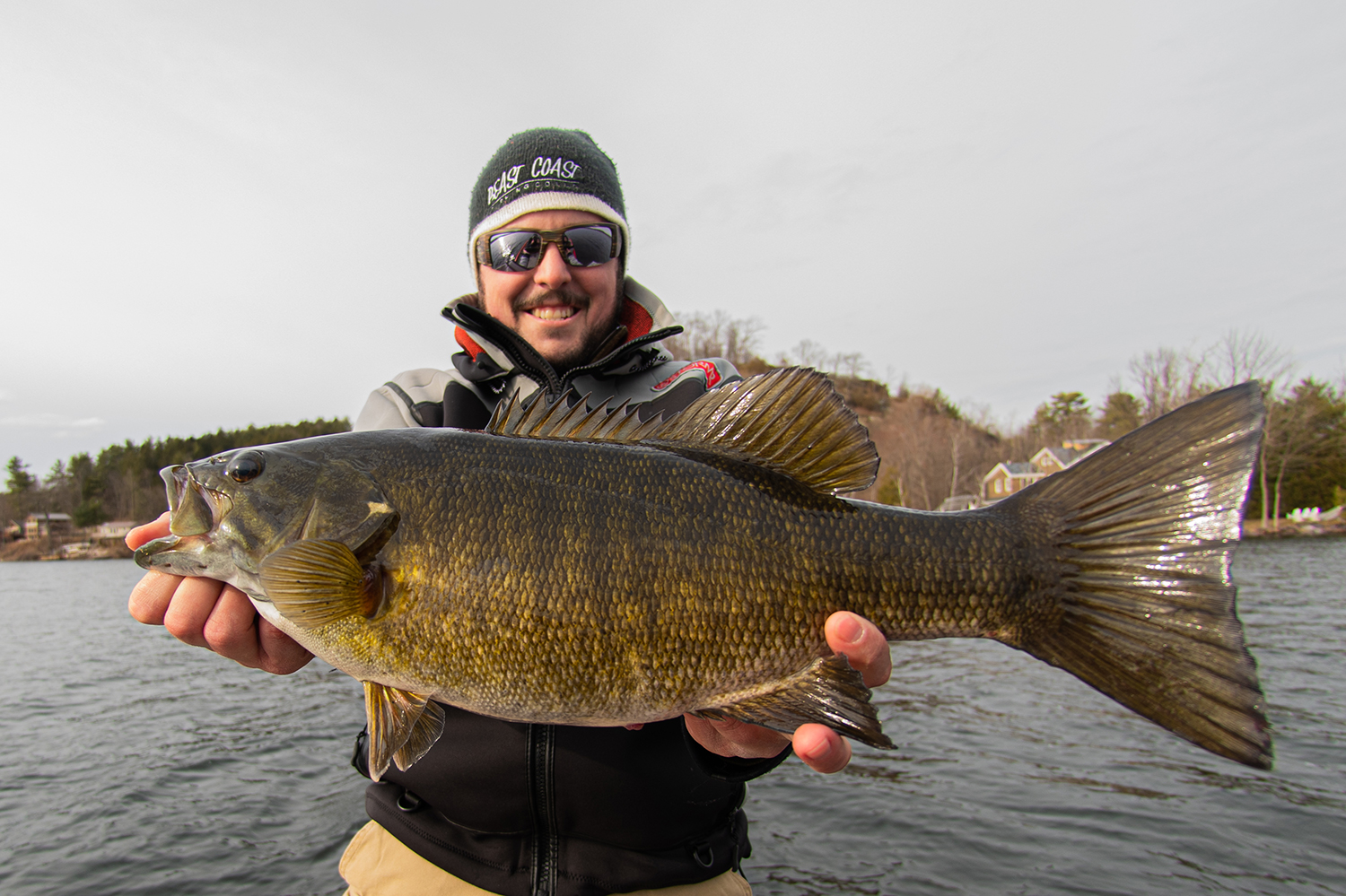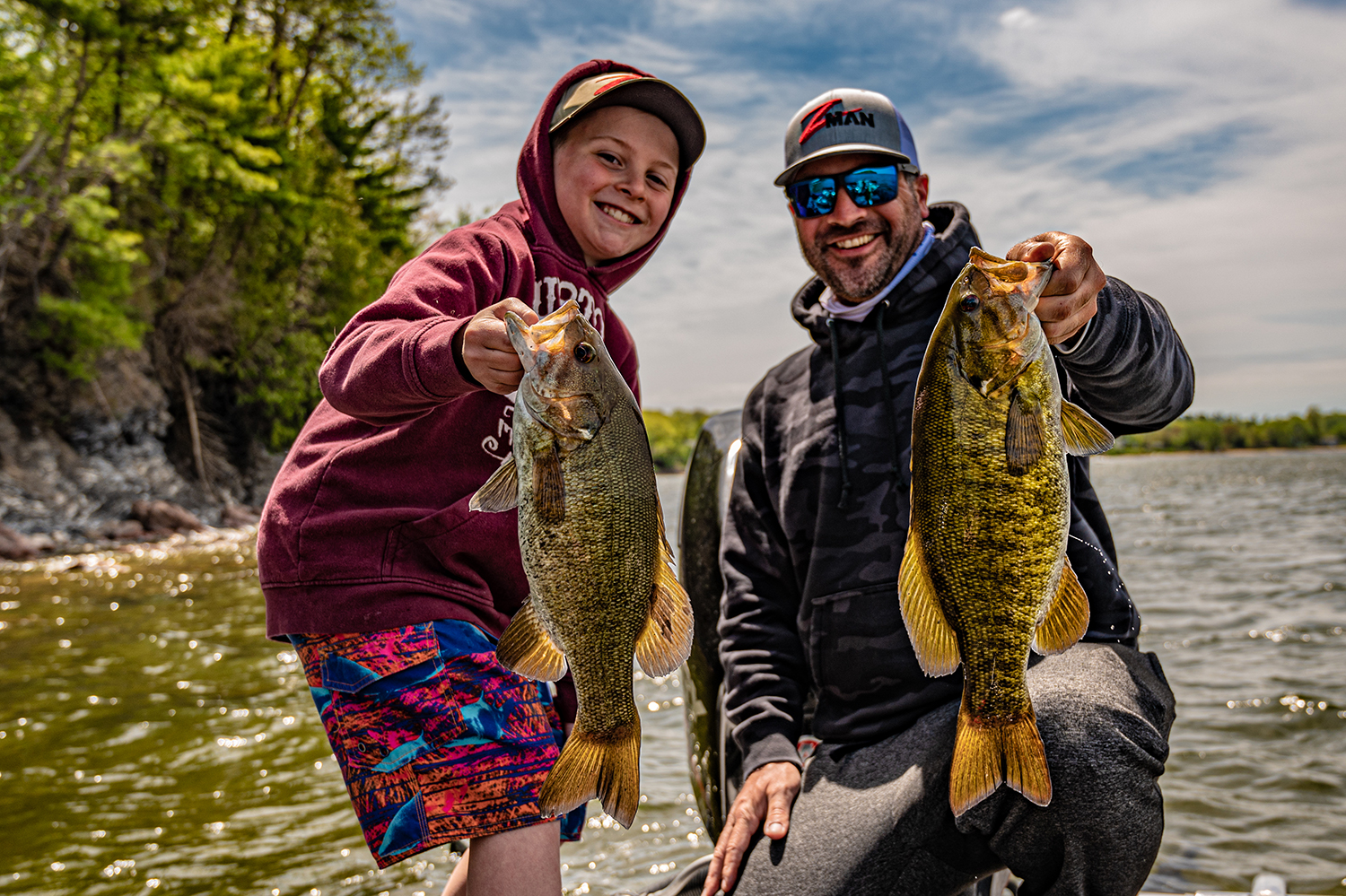
Most anglers have both spring and fall marked on their calendars as the best time to catch giant smallmouth bass. Bass feed heavily during fall, which makes for some of the best fishing action one can find. In the spring, fish will feed up before and after the spawn making up for a long winter of a slowed metabolism. Likewise, fall presents an opportunity for smallmouth to gorge on forage and bait fish as they prepare for the winter.
When the water cools in the North, crawfish shells get harder making them a less desirable meal to smallmouth. When this happens, baitfish become a number one priority. However, prior to fall, in the earlier part of the cooldown, fish will locate along the rocky transitions and eating crayfish as long as they can. When the first frosts hit the region, most bass will move off of the crawfish and look for larger meals – baitfish. Keeping these trends in mind, a few tactics and tips will help you catch your biggest bronzeback of the year.
Catch a Break
Focus on areas where smallmouth can quickly move between shallow and deep water. As the summer turns to fall, and fall to winter, temperatures steadily drop with warm and cold periods mixed in. Look for areas with tighter contour lines somewhere between 10 and 20 feet. Typically, the fish will be either above or below those tight contours. When its cooler, they will be shallower. When its warmer, focus your efforts on the deeper side. During this period of fluctuating of water temperatures, keep an open mind.
Reach for bottom contact baits that offer fish a larger meal. Heavier football jigs with a crawfish trailer work as they offer a big meal and can be worked slowly throughout rocky areas. When its windier, a Carolina rig will catch fish dragged along the break. A Carolina rig is another bait that can be drifted in windier conditions. In colder weather, fish push up on the shallower just off the deeper water, and flats with sparse vegetation are key as they hold baitfish. Reaction-type baits are the best in these situations as the fish are super aggressive and will work for a big meal.
Cover Water
The name of the game when the fish are shallow in the fall is to cover water. If you are not getting bites, keep moving. Autumn in the north is usually accompanied by the wind—and let the wind be your friend while drifting big flats. Start on the upper end and drift while fan casting multiple depth ranges. If the boat is in 7 feet you can cover between 5 to 9 feet with very little trolling motor effort while making long casts.

Reaction baits such as a spinnerbait or a Chatterbait are ideal as you can make a lot of casts in a short time. Pair them with 7-foot-plus rod length casting equipment and a 6.3:1 or 7.1:1 reel. The faster reel allows the baits to be burned quickly giving the fish less time to think, which will trigger more bites.A faster reel and longer rod help to ensure a good hookset which is important in landing big smallmouth. In the wind, the fish can’t see the bait or line as well and you can get away with heavier equipment. Fifteen- to 20-pound fluorocarbon will work with either bait and paired with a glass rod, you can rip the baits through vegetation and still get a hook in the fish.
On less windy days, the spinnerbait and Chatterbait will work, but adjusting the size of the bait and line is key. Although it’s fun to toss big baits for big fish, the lack of wind will require a slight changeup. Rather than 15-pound or heavier line, dropping down line size, especially in cleaner water is key. Lighter line will allow for increased casting distance, but big fish will test your equipment. Another bait to consider in cleaner water and calm conditions would be a jerkbait. The slower presentation and quick erratic action will trigger fish to bite. For a finesse approach, a spybait or small swimbait in the fall are great when the conditions get tough.
Follow the Dots
While covering water mining flats for hungry bass, something I have had success doing is running the same water multiple times. Make a waypoint anywhere you catch a fish or get bit. Although you can get bite anywhere, there will be key areas that baitfish congregate in where multiple bass will be nearby. While moving quickly through an area, it is not easy to cover every inch of water at every angle. Having a track and waypoints ahead of you will keep you in high percentage areas throughout your drift. You can quickly speed through areas of dead water and slow down and pick apart sections of water. Move through areas a little shallower and a little deeper casting both directions. A lot of times a single big fish will move up to feed in one area while small pods of fish occupy other areas.
The bites can be random, but chances are you may run into the biggest brown bass of the year this fall.











































